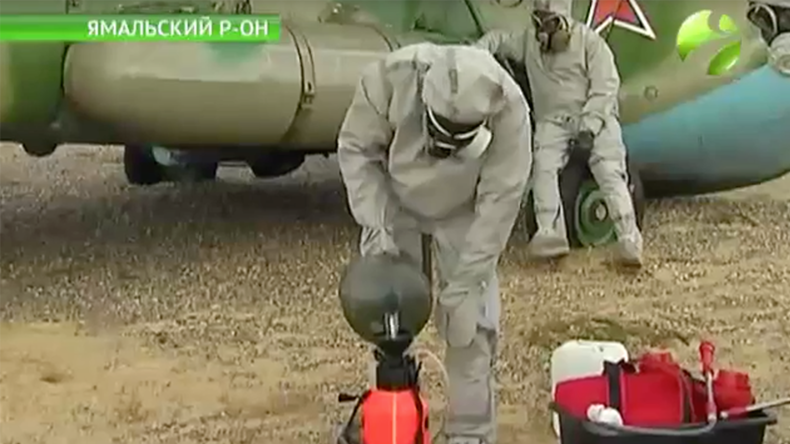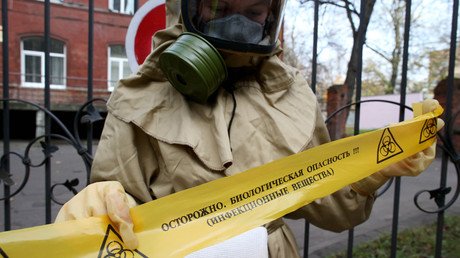Siberia anthrax outbreak: 12yo boy killed, 8 infected as disease returns after 75 years

A 12-year-old boy evacuated from an anthrax epidemic zone in Russia has died in hospital while eight other people have been diagnosed with the disease. The infection has resurfaced in western Siberia 75 years after the previous outbreak.
The child died in hospital in the city of Salekhard, the capital of the Yamalo-Nenetsk Autonomous Area, where quarantine over the anthrax outbreak was declared last week. The boy was among several dozen indigenous people evacuated from the contaminated area.
“We are 90 percent sure that he died from anthrax. He had the intestinal form of the disease, which is harder to diagnose,” the office of Yamal Governor Dmitry Kobylkin told TASS.
The governor said he had no words to express his grief over the boy’s death.
“From day one we’ve been walking the extra mile and doing everything possible to save every life. But the infection has proven to be insidious,” he said. “It returned after 75 years and claimed a child’s life.”
This epidemic is a rare case, scientists say, but the cause goes a long way back.
“In Siberia, it is an uncommon event, and the issue is that a raindeer likely defrosted from the permafrost because of the heat wave that occurred, and that animal had the spores in it [which] got into the environment around it. Other raindeer, who were nibbling on the grass, acquired the anthrax infection themselves,” professor of preventive medicine Doctor William Schaffner told RT.
More than two thousand of those deer have already died, all of them in the Yamalo-Nenetsky area. This territory is located above the Arctic Circle, and is generally known for a very long winter that lasts up to 8 months, and extremely low temperatures, reaching -70 degrees Celsius.
A total of 90 people, half of them children, were taken to hospital after being evacuated from the remote area where the infection spread. Most of them tested negative for the disease.
Yamal residents are collecting donations for the evacuees, who had to leave most of their possessions behind. Considering their nomadic lifestyle, many of them are now left with nothing except the clothes they are wearing.
The ongoing anthrax outbreak is the first reported in Yamal in over seven decades.
So, how does the illness get into the human body?
“Anthrax bacteria can survive for long periods of time in spores, and when that spore gets into the human body, it opens up, and the active bacteria that can cause illness occurs. It can, if you inhale it, cause pneumonia, it can get into your bloodstream, it can get into cuts in the skin, and cause local infections also. It’s a very serious infection, once it gets into the human body, and can have the capacity to kill the individual,” professor of preventive medicine Doctor William Schaffner told RT.
Humans can be exposed to anthrax by eating contaminated meat, breathing in spores or getting the bacteria on broken skin while handling animal products or carcasses.
READ MORE: Anthrax infection found in Wiltshire cow
Biological warfare troops and civilian emergencies specialists were deployed to the epidemic area to dispose of dead animals and eradicate pests such as rats, which can spread anthrax. A mass vaccination of the population was conducted over the last week. Livestock vaccination is currently underway with a total of 41,000 animals expected to be given anthrax vaccine doses.
The large area of the potential infection zone is hampering efforts, with veterinarians having to cover big distances to reach every reindeer herd.













